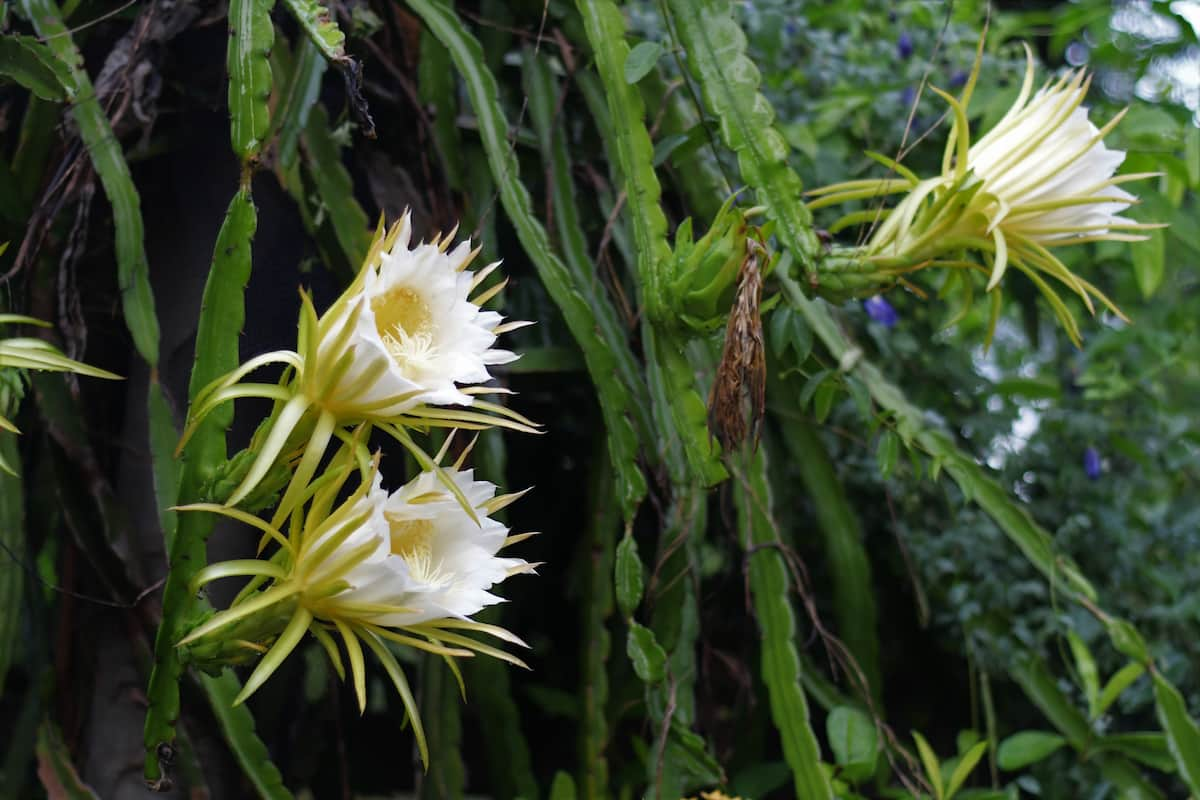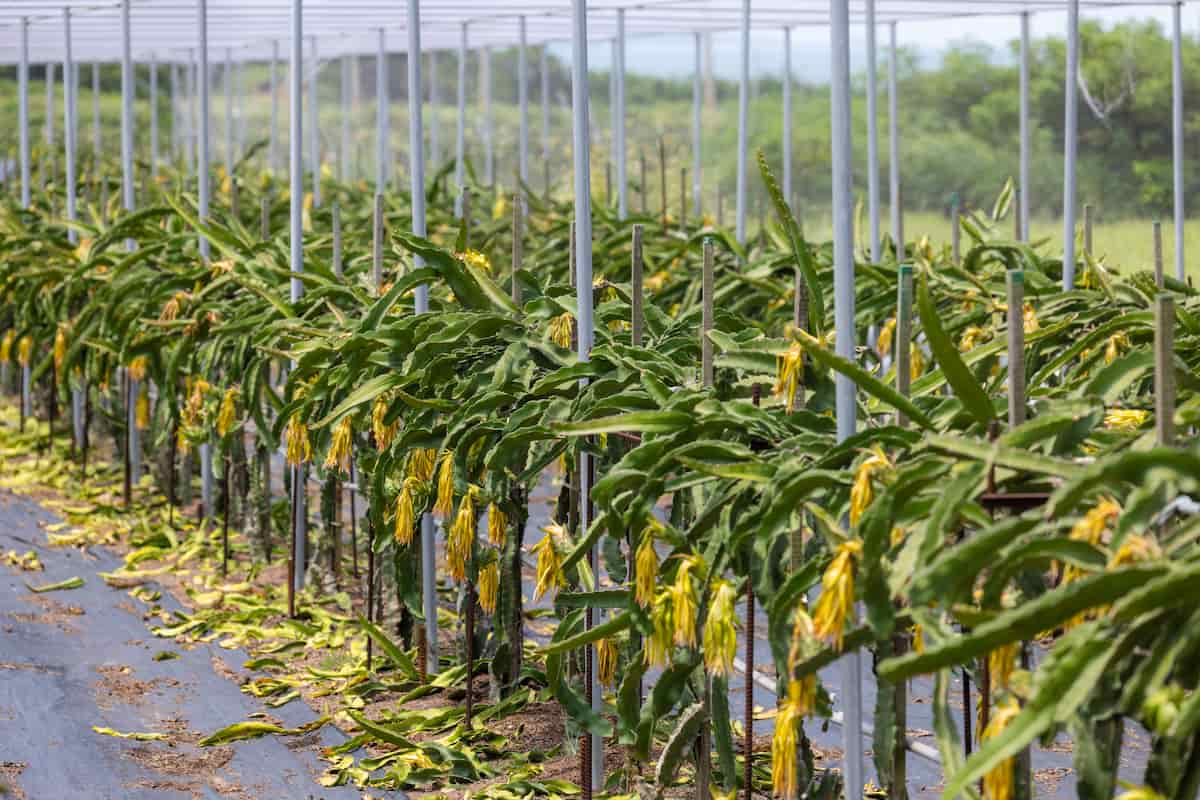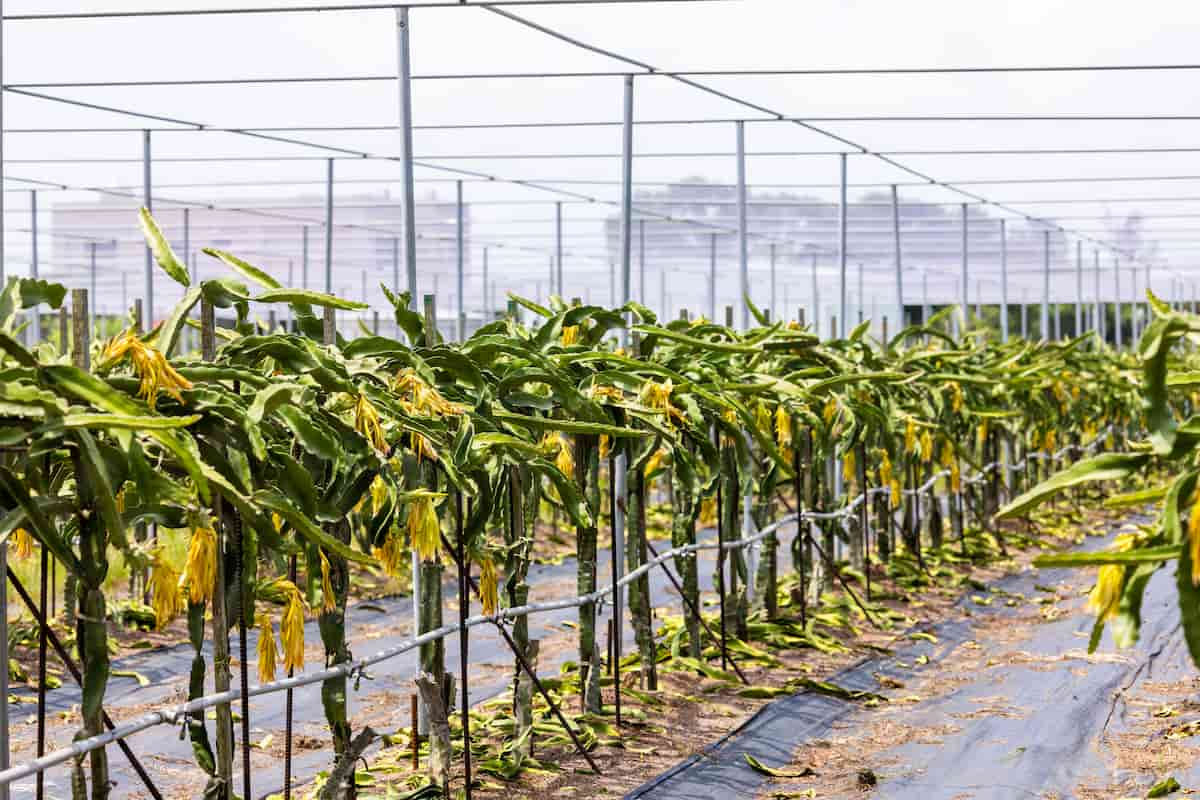First, ensure the plant receives ample sunlight, with at least 6-8 hours of direct sunlight per day. Additionally, the soil should be well-draining and slightly acidic, with a pH between 6.0-7.0, to prevent waterlogging and root rot. Regular fertilization with a balanced fertilizer high in phosphorus and potassium can also encourage flower formation.

Temperature control is important, as sudden temperature changes can stress the plant and impact flower formation. Pruning dead or damaged branches and supporting the climbing plant with trellises, stakes, or fences can promote new growth and encourage flower formation. Finally, watering the plant deeply once a week, or more often in hot and dry weather, can also help ensure healthy flower development.
How to Increase Female Flowers in Dragon Fruit/Pitaya
Introduction to Dragon Fruit Cultivation
Dragon fruit, also called pitaya, is a tropical fruit that is recognized for its unique appearance and nutritional value. The fruit features a bright pink or yellow outer skin that is covered in green scales, and its inner flesh is white or pink with tiny black seeds. Although native to Central and South America, dragon fruit is grown in tropical areas globally. Cultivating this plant involves growing it in warm, moist conditions with sufficient sunlight and well-draining soil.
The plant is a climbing cactus that requires support like trellises or stakes, and produces large, showy flowers that develop into the fruit. Dragon fruit is consumed raw, used in desserts, juices, or smoothies, and is rich in antioxidants, fiber, and vitamin C. Growing dragon fruit can be a fulfilling and nutritious addition to any tropical fruit garden.
Understand the Anatomy of Dragon Fruit Flowers
Dragon fruit flowers are nocturnal and bloom at night, and are around 25-30 cm in diameter. The flowers have three main parts: the ovary, stamen, and stigma. The ovary is the base of the flower and contains eggs that develop into seeds when fertilized. The stamen, located in the center of the flower, is the male reproductive part with a long filament topped with pollen-containing anthers.
The stigma, at the tip of the style connected to the ovary, is the receptive surface for pollen and is responsible for fertilization. Successful pollination and fruit production depend on understanding and promoting pollination by attracting pollinators and maintaining healthy flowers. The floral characteristics of H. polyrhizus were observed for four days at various durations of anthesis.
During anthesis, the floral length of 10 individual flowers was measured from petal tip to flower base. The tepals of the flower were carefully removed, and the shape and color of the tepals were observed and categorized. The number of tepals, as well as their length and width, were measured. The distance between anthers and stigma; the length and number of stigma lobes, style length, and diameter; and the number of stamens per flower were also determined.
Best Variety of Cultivation Dragon Fruit
- Dragon fruit is a tropical fruit that comes in various varieties with different characteristics. Here are some types of dragon fruits:
- Hylocereus undatus, also known as Pitahaya or White fleshed pitaya, has pink skin, black seeds, and white flesh.
- Hylocereus polyrhizus, also called Red Pithaya, is native to Mexico and has red flesh.
- Hylocereus costaricencis, also known as Pitaya Roja or Red fleshed pitaya, is a variety from Costa Rica with violet-red flesh and pear-shaped, black seeds.
- Hylocereus selenicereus, also called Pitaya Amarilla or Yellow pitaya, is native to America and has yellow skin and white flesh.
In case you missed it: How to Increase Female Flowers in Apple: Explained in 10 Steps for High Yields and Profit

Optimal Growing Conditions for Dragon Fruit
- Dragon fruit grows best in warm, humid climates with plenty of sunshine and well-draining soil.
- The ideal temperature range for growing dragon fruit is between 68-86°F (20-30°C).
- Temperatures above 95°F (35°C) can cause premature fruit drop.
- Dragon fruit plants require support such as trellises or stakes as they are climbing cacti.
- A slightly acidic soil with a pH range of 6.0-6.5 and good drainage is preferred.
- Regular watering is important for proper growth and fruit production, but the soil should be clean.
- Fertilization with a balanced fertilizer high in phosphorus and potassium can promote healthy growth and fruit production.
- Providing warm, sunny growing conditions with well-draining soil and adequate support is key to successful dragon fruit cultivation.
Dragon Fruit Flowering Stage
Dragon fruit, also known as pitaya, is a cactus species that blooms at night between June and August. During the several weeks of flowering, the plant produces large, fragrant white or yellowish flowers that bloom only once, each lasting only one night before wilting and falling off. Pollination occurs mainly through moths or bats, which are attracted to the flowers’ scent. After pollination, the plant produces fruit, which takes several weeks to mature and ripen. Dragon fruit is popular for its sweet, juicy flesh and many health benefits.
Factors that Affect Less Female Flowers in Dragon Fruit
- Temperature: High temperatures can increase male flower production.
- Light: Insufficient light can decrease female flower production.
- Water: Over-watering or under-watering can reduce flower production.
- Nutrient deficiency: Lack of phosphorus and potassium can produce more male flowers.
- Genetics: Some varieties naturally produce more male flowers than female flowers
- Pruning: Pruning can promote female flower production by improving light and airflow.
10 Simple Tips to Increase Female Flowers in Dragon Fruit
- Maintain an optimal temperature range between 18-35°C to avoid high temperatures that can cause more male flowers.
- Ensure the plants receive enough light to promote the induction of female flowers.
- Apply a balanced fertilizer that contains phosphorus and potassium to prevent a nutrient deficiency that leads to more male flowers, and use the Plant Harmones which helps in the more female flowers production
- Use organic fertilizers such as compost or manure to improve soil fertility and promote female flower production.
- Ensure adequate watering, avoiding over or under-watering, which can reduce flower production.
- Drip irrigation can help control water distribution and ensure the plants receive the right amount of water.
- Pruning can help to promote female flower production by maintaining a balanced canopy and improving light penetration.
- Avoid chemical pesticides that can disrupt the ecosystem’s natural balance and reduce pollination, leading to reduced female flower production.
- Attract pollinators such as bees and bats to increase pollination and improve female flower production.
- Choose a variety that naturally produces more female flowers, such as ‘Vietnamese Jaina.’
In case you missed it: How to Increase Female Flowers in Avocado: Explained in 10 Simple Steps

Conclusion
These include maintaining an optimal temperature range, providing adequate light, applying a balanced fertilizer, using organic fertilizers, proper watering, using drip irrigation, pruning properly, avoiding chemical pesticides, attracting pollinators, and choosing the right variety.
- Ultimate Guide to Ossabaw Island Hog: Breeding, Raising, Diet, and Care
- Ultimate Guide to Juliana Pig: Raising Facts, Size, Diet, Care, and Lifespan
- Raising Lleyn Sheep: Disadvantages, Price, Uses, Characteristics, and Care
- Ultimate Guide to Meishan Pig: Breed Facts, Breeding, Raising, and Care
- Ultimate Guide to Teacup Pigs: Raising, Diet, Lifespan, Cost, and Care
- Guide to Raising Poll Dorset Sheep: Facts, Profile, Characteristics, Uses, and Care
- Ultimate Guide to Bighorn Sheep: Characteristics, Diet, Lifespan, Breeding, and Lifecycle
- Ultimate Guide to Raising Katahdin Sheep: Farming Facts, Breed Profile, Uses, and Care
- Ultimate Guide to Raising Oreo Cows: Belted Galloways Farming Facts, Profile, Uses, and Care